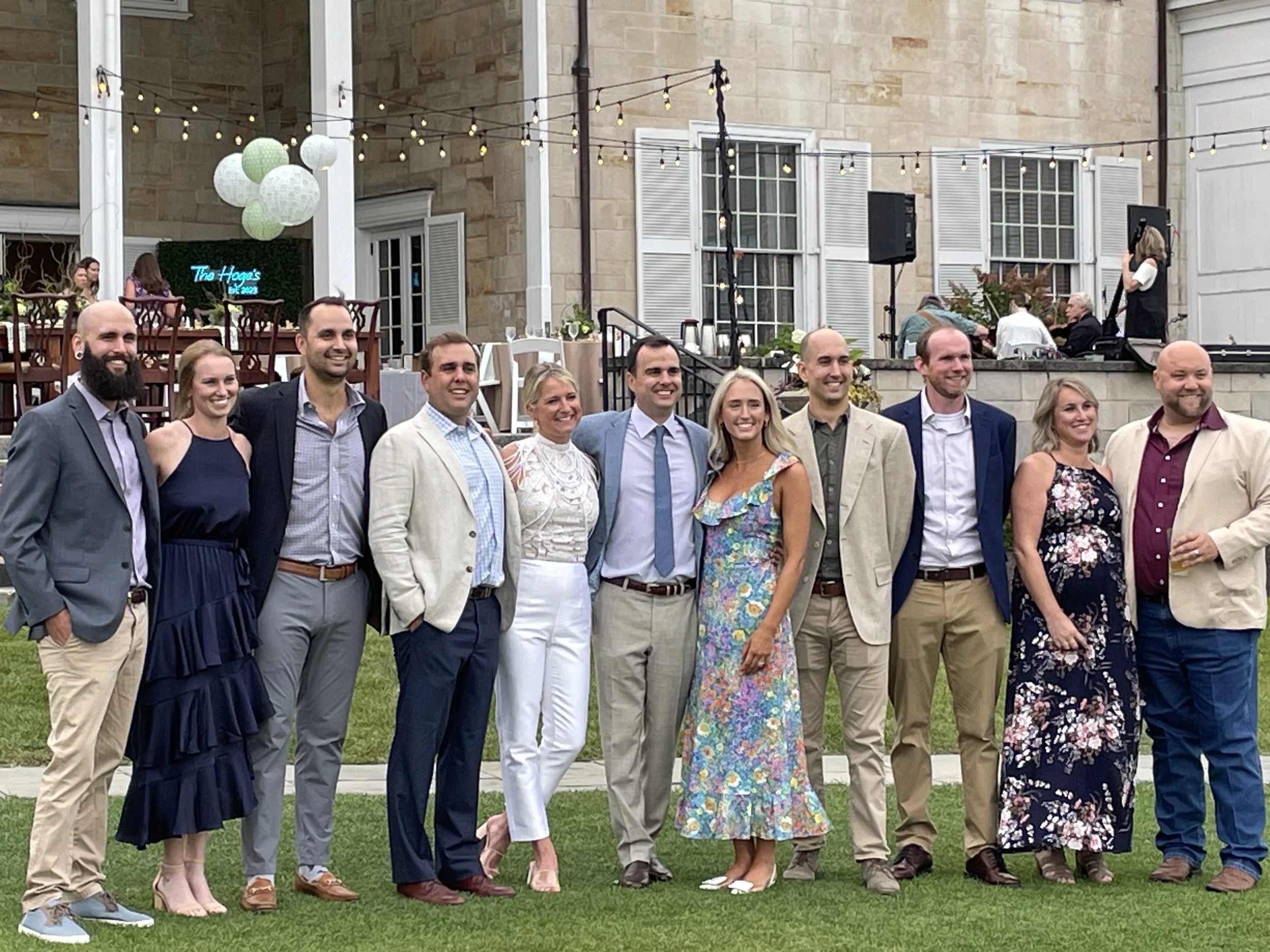How Do You Define Family? Inclusive or Exclusive?
Cousins and spouses at Preston and Lucy’s Rehearsal Dinner 2023 (minus Charlie)
Growing up just north of Chicago in a small Polish Irish community, our family of five girls regularly got together with our aunts, uncles, and cousins. Our grandparents were regular babysitters conveniently located an easy one-block walk from home. Being raised in a family business, we worked and played together. Our closest friends and confidants were all related. Growing up in a close-knit family, we were sheltered from the current mosaic of extended family. We did not hear about divorce, stepchildren, significant others who were not married, or adoptions. The “Leave it to Beaver” family unit was the norm until now. In our current eclectic environment, how do you define family?
According to the dictionary, a family is defined as “a social group made up of parents and their children.” Let us pick the definition apart. A “social group,” according to Google, “consists of two or more people who regularly interact based on mutual expectations and who share a common identity.” But the limiting factor, according to the explanation by Webster, is that it is made up of parents and children. What about aunts, uncles, cousins, and grandparents? What about significant others who are not parents? Do you exclude the spouse?
Let us take a different perspective on the definition. According to Women’s Podium, a true family is, “A group of people who have each other’s back and are willing to go to the ends of the earth to bring a smile to the others’ face. Call it a true family or a real family—the true family definition is the sense of loyalty, selflessness, love and genuine care and concern for the others.” This inclusive statement throws a wide net over who would be part of the newly defined family circle of today.
But why is it important to define who is considered family? For one reason, knowing who to invite for holidays and family celebrations. Think about an upcoming wedding, if you plan on inviting the family, who would be on the list? What is the cut off? If you come from a big family like mine, having 300 people at a wedding is not unusual. But with the limiting factor of the venue’s size or financial restrictions, inviting the entire family might not be feasible. Getting back to the original definition of family which includes those who share an identity, weeding out members you might not have seen since childhood could be your measure. But those non-family members who could be defined as “a brother from a different mother,” may make it to the top of your list of invitees.
If you are looking to hold a group meeting, your list of family would be shrunk down to the immediate members. In my case, having five sisters, my parents would hold casual family meetings with just the daughters. Topics would include their estate, family vacations and hopes and dreams for family togetherness into the future. But if you are talking about family bonds, the exclusivity of the group put a wedge between attendees and non-attendees. Since the kids were all young children at the time, keeping them at childcare was reasonable. The spouses, however, were the ones excluded from the conversation. Although at times, a sister might not have a spouse because of divorce or separation, not including the others was a harsh statement defining who is in the family circle.
My recommendation when defining your particular family would be to error on the side of inclusivity. Although the scope might be broad when deciding on who to invite to a family celebration, it would need to be narrowed to hold a productive meeting. But you do not have to alienate any of the members. If there are over 10 people considered immediate family, have each branch select a representative. When decisions affect all members of the family, decide if a family forum is a better alternative.
Here are some thoughts to consider when determining who should be included as immediate family. Your children over the age of 18 which could be comprised of adopted, stepchildren or guardian children. Significant others if they are married, engaged, or living together would be another point of discussion. Depending on the topic, consider a parent of your grandchild who might not be married to your child due to death or divorce. A grandparent would be a good invitee especially if there are discussions on family history and legacy. Grandchildren if over the age of 18 along with their significant others as defined earlier.
Although there are no strict rules on how family is defined, traditional or untraditional, it should be clearly stated to all members. This is not just for celebrations and meetings. When doing estate planning, wills and trusts need the specifics on who is included. In order to keep family harmony, beneficiaries need to be aware of their obligations prior to a family member passing away. This is true for any transfer of wealth, but especially important for those involved in a family business.
Do you have your family unit clearly defined? What is your criteria?

